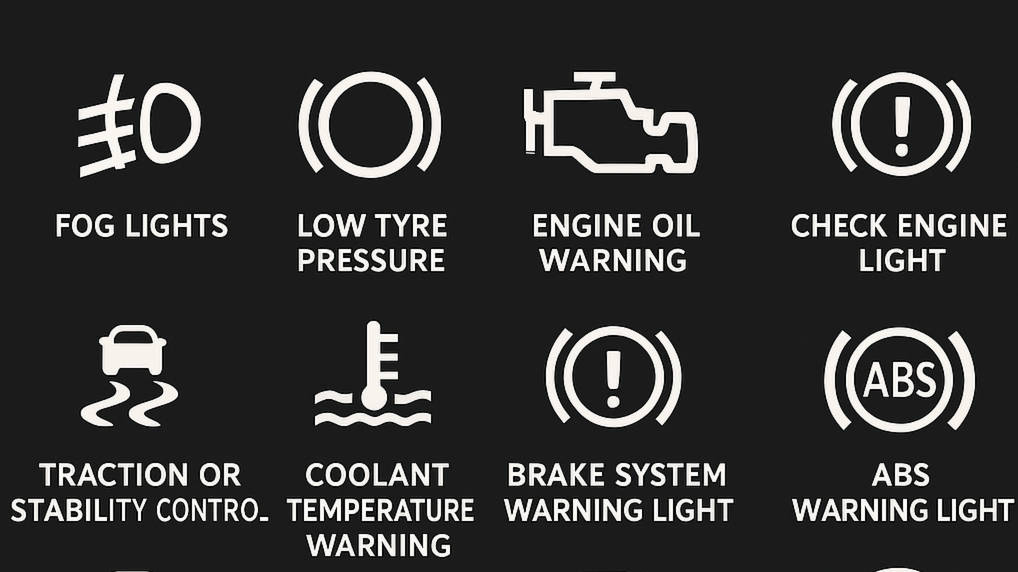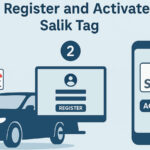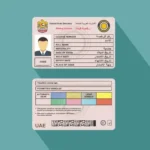Understanding Dashboard Warning Lights in Your Vehicle in Dubai
Modern vehicles are equipped with advanced technology aimed at enhancing safety, and the dashboard plays a crucial role in this. This interface, filled with warning lights and symbols, serves as your vehicle’s communication system, alerting you to various operational issues. Understanding these alerts is essential for prompt action to prevent more significant problems down the road. In Dubai’s unique driving conditions, being aware of these warning signs is particularly critical. Let’s explore the most common dashboard warning lights across petrol, diesel, and electric vehicles (EVs).
Common Dashboard Warning Lights
Fog Light Indicator
This symbol resembles a headlight encircled by wavy lines, indicating that your fog lights are activated. These lights improve visibility during adverse weather conditions such as fog, rain, or heavy snow. Not all vehicles are equipped with fog lights; if this indication remains illuminated or blinks, it might signal an electrical issue.
Low Tire Pressure Light
Depicted as a yellow warning symbol of a flat tire with an exclamation mark, this icon alerts you to low tire pressure in one or more tires. Insufficient pressure not only affects fuel efficiency but also impacts grip and tire longevity. Safely pull over, check the tires, and inflate them as needed. Most systems will automatically reset once the pressure normalizes.
Engine Oil Pressure Warning
A droplet icon is a warning that your engine oil pressure is low, which can lead to serious engine damage if unaddressed. If this light appears, halt your vehicle safely and check the oil when the engine has cooled. If the oil level is normal, the issue could be with the oil pump or sensor, requiring professional inspection.
Check Engine Light
This ubiquitous symbol of an engine or the phrase “Check Engine” indicates a range of issues, from minor faults like a loose fuel cap to more severe problems such as an emissions error. Although your vehicle may continue to operate, it’s wise to consult a mechanic promptly.
Traction/Stability Control Light
A symbol depicting a car with wavy lines signifies that the traction or stability control system is either turned off or malfunctioning. These systems are vital for maintaining grip during slippery conditions. If the light engages unexpectedly, it may require urgent inspection.
Coolant Temperature Warning
A thermometer symbol generally signifies that your engine is overheating. Safely pull over and allow the engine to cool. Avoid opening the coolant cap while hot. If the vehicle continues to overheat, further investigation may reveal leaks or thermostat issues.
Brake System Warning Light
A red warning symbol featuring an exclamation mark inside a circle indicates a potential braking system problem. This can range from low brake fluid levels to significant brake failures. Given the critical nature of braking, you should stop immediately and seek roadside assistance.
ABS Warning Light
This light signifies a malfunction within the Anti-lock Braking System (ABS). While your standard brakes will still function, the absence of ABS can make emergency braking less reliable, especially on slick roads. Schedule a check-up as soon as possible.
Airbag Warning Light
Depicted as a figure with a circle (representing an airbag) indicates a fault in the airbag system, which could compromise your safety in a collision. Quick repair is essential to ensure your airbags deploy when needed.
Battery Warning Light
A red battery icon alerts you that your vehicle may be running solely on battery power due to a failing alternator. If this light illuminates while driving, seek a garage immediately to prevent power loss.
Low Fuel Light
This light appears when fuel levels drop below approximately 10-15%. Fill up as soon as possible to avoid running out of fuel, particularly important in Dubai, where certain areas may have limited refueling options.
Diesel Glow Plug Light
For diesel vehicles, a swirling symbol indicates that glow plugs are warming the engine for a cold start. Wait for the light to extinguish before starting; if it remains illuminated or blinks, consult a mechanic.
Door Ajar Warning Light
This symbol signifies that one or more doors, including the trunk, are not securely closed, posing a safety risk while driving—especially at high speeds.
Seatbelt Reminder Light
A symbol featuring a seated figure with a seatbelt icon reminds unbuckled passengers to fasten their seatbelts. Ensure compliance to turn off the light.
Washer Fluid Warning Light
A windshield with water spray indicates low washer fluid. While it won’t stop your vehicle, driving with insufficient windshield visibility can be hazardous.
Power Steering Warning Light
This symbol signifies a potential issue with the power steering system. If you notice difficulty steering, immediate inspection is recommended to ensure safe maneuverability.
DPF Warning Light (Diesel Particulate Filter)
Depicted as a box with dots, this light indicates that your DPF is clogged, requiring either a long drive at steady speeds to clear or professional cleaning.
Automatic Transmission Warning Light
This symbol may appear as a gear icon. It suggests a problem with the transmission, warranting immediate examination to avoid costly repairs.
Electric Vehicle-Specific Dashboard Warning Lights
Electric vehicles have unique warning lights that are integral to their function:
- EV System Warning Light: Indicates a fault within the electric drive system.
- Battery Temperature Warning: Alerts you to extreme battery temperatures that could impair performance.
- Charging System Warning: Signifies issues during charging, such as loose cables or faulty connections.
- Low EV Battery Warning: Signals an imminent need to recharge your vehicle’s battery.
- Electric Motor Warning Light: Indicates a malfunction with the electric motor or related components.
Additional Notes on Shared Dashboard Warning Lights
Many alerts are common across both internal combustion engines (ICE) and electric vehicles, including indicators for seatbelt usage, brake systems, tire pressure, and door ajar warnings.
What to Do When a Warning Light Activates
- Stay Calm: The majority of alerts are not emergencies.
- Identify the Symbol: Check the vehicle’s manual or infotainment screen for clarification.
- Stop If Necessary: Issues like overheating necessitate immediate action—safely pull over.
- Seek Assistance: Contact roadside help or a mechanic if needed.
- Regular Maintenance: Preventive care can significantly reduce the occurrence of warning lights.
Understanding your dashboard’s warning lights enhances safety and vehicle longevity, especially in the challenging driving conditions of Dubai. Whether you’re behind the wheel of a petrol, diesel, or electric vehicle, staying attentive to these indicators is key to ensuring a smooth and safe driving experience.
FAQs
What should I do if a warning light appears while driving?
Remain composed. Check the warning light symbol. For red alerts, pull over safely and turn off the engine. Yellow or orange lights may allow for cautious continued driving, but seek repairs soon.
Can I ignore a check engine light if the vehicle seems fine?
No, ignoring this alert can lead to severe engine issues. Schedule a diagnostic as soon as possible to prevent escalating repairs.
Do dashboard lights reset automatically?
Yes, many will deactivate once the issue is resolved, such as after refilling tire pressure. Some, however, may require a mechanic’s reset.
Are warning symbols consistent across all vehicles?
While many symbols are standardized, variations exist depending on make and model. Always consult your vehicle’s manual for details.
Is it safe to operate with the ABS light illuminated?
You can drive, but the absence of ABS can impair braking safety. Have the system examined soon.
Why is my battery light still on during driving?
This often signifies a charging issue that could be linked to a malfunctioning alternator. Immediate assistance is advisable to avoid power loss.
Can cold weather trigger dashboard warning lights?
Yes, lower temperatures can affect battery functionality and tire pressure, potentially leading to warning alerts. Some lights may disappear once the vehicle warms up.
Additional Reading
For more insights on vehicle maintenance and technology, stay informed with our latest articles on automotive trends in Dubai.
Source:www.dubicars.com






